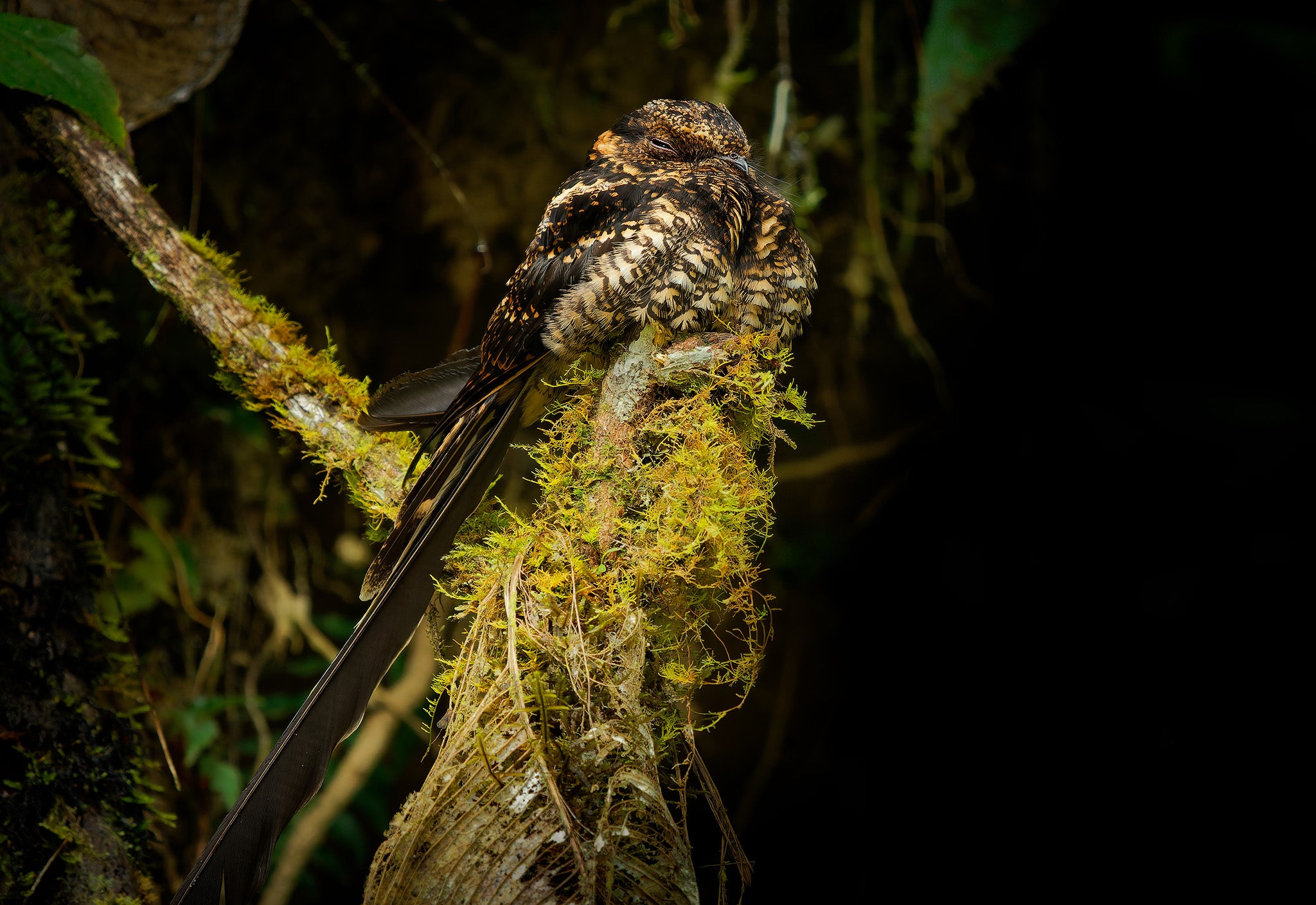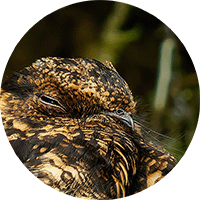Lyre-tailed Nightjar
The Lyre-tailed Nightjar (Uropsalis lyra) Read in Spanish
Appearance: The Lyre-tailed Nightjar is known for its striking appearance, characterized by a distinctive lyre-shaped tail in males, which gives the species its name. Males have long, elaborate outer tail feathers that form a lyre-like shape, used in courtship displays. Both males and females have cryptic plumage, with intricate patterns of browns, grays, and blacks that provide excellent camouflage in their forested habitats.
Habitat: Lyre-tailed Nightjars inhabit dense tropical rainforests, humid montane forests, and forest edges. In Colombia, they can be found in various regions with suitable forested habitats, including the Amazon basin, Andean foothills, and other areas rich in biodiversity.
Behavior: This nightjar species is predominantly nocturnal, relying on its cryptic camouflage to roost and blend in with its surroundings during the day. They are skilled fliers, adept at hunting insects in mid-air. Lyre-tailed Nightjars are known for their elaborate courtship displays, where males use their lyre-shaped tails to attract females through intricate aerial displays and vocalizations.
Breeding: Breeding behavior in Lyre-tailed Nightjars is marked by complex courtship rituals involving aerial acrobatics, vocalizations, and displays of the striking tail feathers by males. Females typically lay one or two eggs on the forest floor, where they are incubated for a period before hatching.
Conservation Status: The Lyre-tailed Nightjar species is currently classified as "Least Concern" on the IUCN Red List of Threatened Species.
Distribution
The Lyre-tailed Nightjar (Uropsalis lyra)
Andean Foothills: The Andean foothills of Colombia, spanning departments like Antioquia, Risaralda, Caldas, and Quindio, also provide important habitat for the Lyre-tailed Nightjar. These areas offer a mix of montane forests, cloud forests, and rich biodiversity that support populations of this unique bird species.
Taxonomy
The Lyre-tailed Nightjar (Uropsalis lyra)
- Kingdom: Animalia
- Phylum: Chordata
- Class: Aves (Birds)
- Order: Caprimulgiformes
- Family: Caprimulgidae
- Genus: Uropsalis
- Species: Uropsalis lyra
Vocalization
The Lyre-tailed Nightjar (Uropsalis lyra)
- Song: The male Lyre-tailed Nightjar is known for its distinctive and melodious song that is often heard during the breeding season. The song is a complex series of whistles, trills, churrs, and other musical notes that are used in courtship displays to attract females and establish territory boundaries. The song is typically delivered from a prominent perch or during aerial displays.
- Churring and Purring: Outside of the breeding season, Lyre-tailed Nightjars may produce soft churring and purring sounds as part of their communication with mates, neighbors, and offspring. These gentle, soothing vocalizations help maintain social bonds and convey information within the bird's social group.
- Alarm Calls: When threatened or disturbed, Lyre-tailed Nightjars may emit sharp, raspy alarm calls to warn others of potential danger. These alarm calls are designed to alert nearby individuals and prompt a coordinated response to address the perceived threat.
- Contact Calls: During foraging or when flying in groups, Lyre-tailed Nightjars may use contact calls to maintain contact with their mates or group members. These calls serve as a means of staying connected in dense forest habitats where visual contact may be limited.





